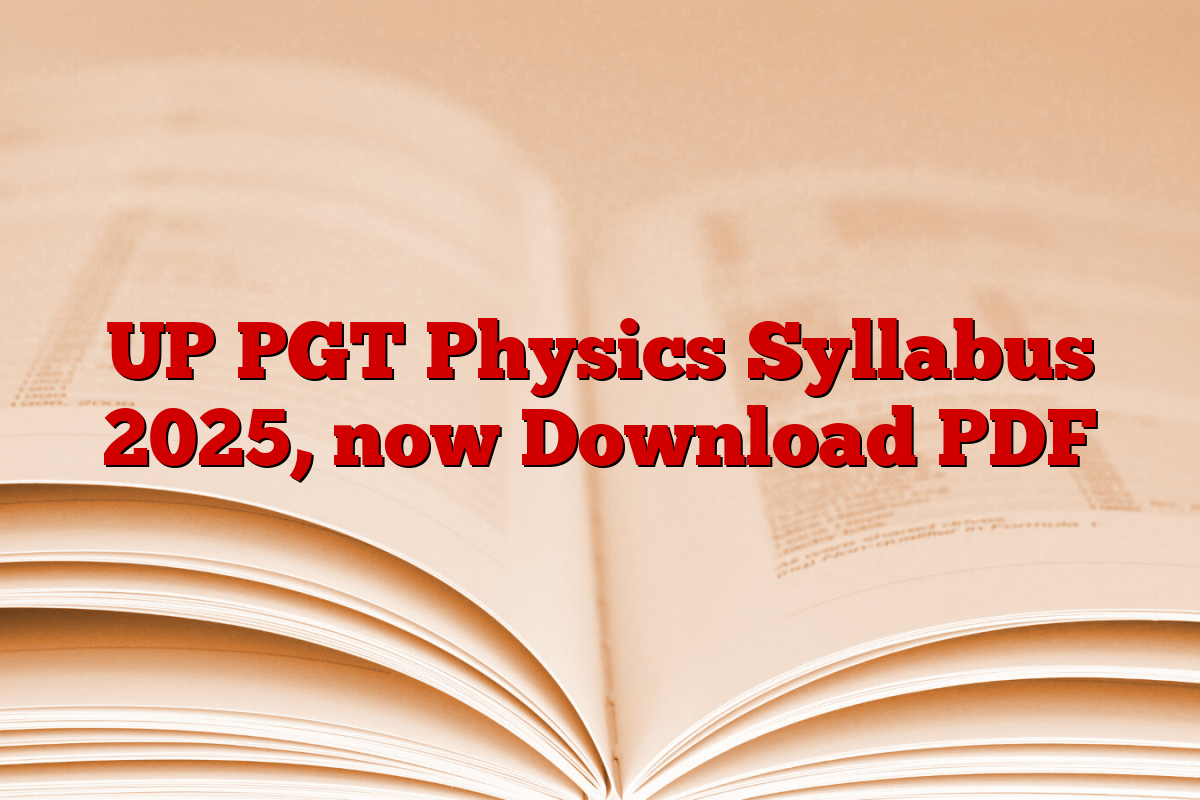The UP PGT PYSISICS SYLlabus has been published on the official website of Uttar Pradesh Secondary Education Services Selection Board (UPSESSB). Candidates are advised to read the course for detailed information on the topics covered for exam pattern, Marx distribution, marking scheme and UP PGT Physics Examination. Candidates can see the following article well for more information about UP PGT Physics Syllabus 2025.
UP PGT Physics Course
UPSESSB has announced the UP TGT PGT recruitment 2025 for 4163 vacancies, so candidates should go through UP TGT PGT Syllabus 2025 and will have to prepare accordingly. UP PGT Physics course is required for candidates preparing for the exam as it outlines major subjects and helps in strategic preparation. The course includes mechanics, thermodynamics, electromagnetism, optics, modern physics and electronics, which cover fundamental and advanced concepts. The exam follows a MCQ-based pattern with 125 questions, with a total of 425 marks, and no negative marking. Understanding the curriculum ensures high accuracy in focusing studies, better time management and examination, which is important for aspirations aimed at securing a teaching status in schools of the Government of Uttar Pradesh.
PGT Physics Exam Pattern 2025
For PGT Physics posts, UP exam pattern 2025 has a single written test with 125 multi-favorite questions (MCQ). The total marks for the exam are 425, each question has 3.4 marks. The duration of the examination is 2 hours, and there is no negative marking for the wrong answers. The pattern is designed to assess the subject knowledge of the candidates, teach qualifications, and to assess logic skills, which is important for candidates to prepare well for all relevant subjects.
| PGT Physics Exam Pattern 2025 | |
| Number of questions | 125 questions |
| Time period | 2 hours |
| Mark | 425 |
| Negative marking | No |
| Each question | 3.4 points |
| Types of questions | Board |
UP PGT Physics mark distribution 2025
The UP PGT Physics Marx Distribution 2025 has a total of 500 marks, which are divided into three components. The written examination has the highest weightage with 425 marks (85%), which assesses subject knowledge and teaching qualifications. The interview has an overall suitability evaluated for 50 marks (10%), communication skills, subject matter expertise and role. Additionally, special qualifications, such as Med, PhD, or NET, contribute to 25 digits (5%). This structured marking scheme ensures proper evaluation of candidates on the basis of their educational knowledge, teaching skills and additional qualifications.
| UP PGT Physics Marx Weightage 2025 | |||||
| No. | Examination | For PGT Post | For TGT Post | ||
| Mark | Percentage | Mark | Percentage | ||
| 1 | Written test | 425 | 85 | 500 | 100 |
| 2 | Interview | 50 | 10 | ||
| 3 | Special Qualification | 25 | 5 | , | , |
| Total | 500 | 100 | 500 | 100 | |
UP PGT Physics Course Detailed
UP PGT Physics Syllabus includes a comprehensive category of subjects including classical mechanics, thermal physics, electromagnetism, optics, modern physics and electronics. Major areas include kinametics, newton laws, rotational speed, gravity, thermodynamics, kinetic principles of gases, electrostatics, current electricity and electromagnetic induction. It also includes wave optics, intervention, diffraction, polarization, quantum mechanics, nuclear structure, nuclear physics and semiconductor equipment. The syllabus is designed to test the ideological understanding and problem-solution capabilities of the candidates, which requires the candidates to have a strong understanding of fundamental principles and their applications in physics.
| UP PGT Physics Course Detailed | |
| Unit | Description |
| Mechanics |
|
| Thermal physics |
|
| Optics |
|
| Waves and oscillations |
|
| Electrical magnetism |
|
| Modern physics |
|
UP PGT Physics Syllabus 2025 PDF
Candidates can mention the table below to download UP PGT Physics Syllabus PDF. Going through the syllabus before starting your preparation will help them understand important topics and structure their study plan efficiently. Regularly will ensure that they will be centered and fix their strategy for better performance during their preparation regularly.
sharing is Caring!
